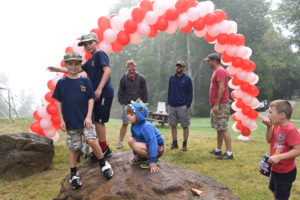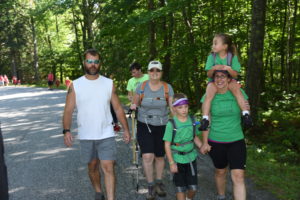Back-to-school tips for kids and young adults with hemophilia
Sponsored by Sanofi
 Entering a new grade or moving away to school can be nerve wracking for any student, but starting the school year with a rare bleeding disorder has its extra challenges. Finding the best way to manage your own care can help you feel more independent and confident in any new environment. Here’s how to help ease these periods of transition, from childhood to the teenage years and on into adulthood.
Entering a new grade or moving away to school can be nerve wracking for any student, but starting the school year with a rare bleeding disorder has its extra challenges. Finding the best way to manage your own care can help you feel more independent and confident in any new environment. Here’s how to help ease these periods of transition, from childhood to the teenage years and on into adulthood.
Childhood to teenage years
Teenage years bring a lot of changes, like becoming more in-the-know and involved with managing your own hemophilia care. In addition to the tips below, learn more from your care team about how hemophilia affects playing sports, puberty, and other activities.
- Learn the basics about your condition: Being open to learning about hemophilia from a young age can lead to more independence in the future. Participating in care can start early, too. Begin to gather materials and learn how to keep an environment clean. Once comfortable, take the next step in mixing factor and tracking infusions.
- Build healthy habits: A healthy weight can help protect joints, which is especially important if you have a bleeding disorder. Eating healthy and getting enough exercise are two great goals. Good nutrition and physical activity can help strengthen muscles and bones. Just be sure to talk to your doctor about bleeding risks and how to protect yourself before you try a new activity.
- Let the right people know: School nurses and teachers should know about your bleeding disorder, since they’re the ones who can support you while you’re at school. A guidance counselor or social worker should know all about Individualized Education Programs (IEPs) that provide special services and instruction to students who need more support.
- Plan ahead when going away from home: Sleepovers and camps can be so much fun. But it’s important to be ready in case a bleed happens. To prepare, have factor, infusion supplies, medical identification, and an infusion log or app. Make sure emergency information and contacts are also up to date and easy to access.
Telling friends and classmates about a bleeding disorder is a matter of individual preference. A simple way of explaining the condition might sound like:
“I have hemophilia, which means my blood doesn’t act like most people’s blood. If I get hurt, like a bump or bruise, it takes me longer to stop bleeding—on the inside and outside. I take medicine to help it stop.”
Teenage years to young adulthood
With age comes a greater feeling of empowerment to take charge of hemophilia and make the care decisions that come with it. Along the way, be sure to lean on support from your family and care network. Your care team is an important resource for more on specific topics like oral care, sexual health and safety, disability rights, and insurance matters. Here are a few ways to prepare for college or moving away from home:
- Maintain healthy habits: Beyond good eating and workout routines, consistently seeing a provider is an important part of navigating life with hemophilia. There may be a need to find new providers when moving away from home or a need to find an adult care provider. Be sure to get regular physical exams and checkups, and always follow your doctor’s prescribed dosing schedule. It’s also good to learn where to get bleeding disorder supplies and the location of the nearest HTC in your area.
- Get to know the community: Moving away from home can sometimes feel like an isolating experience. Getting involved in community organizations and volunteering may introduce you to new opportunities to meet people, find hobbies, and establish a support network. Your Sanofi CoRe or a HTC can help you find a hemophilia chapter nearby.
- Let others know: When living with roommates for the first time, starting a relationship, or talking to classmates, it may be important for them to be made aware of your hemophilia and know what to do in the case of an emergency. An example of telling someone that you have hemophilia might sound like this:
“I have hemophilia. That means that my blood doesn’t clot the same as other people’s, which can lead to prolonged bleeds above and below my skin. It’s a genetic condition that is manageable with treatment.”
Sanofi is committed to empowering people with hemophilia. If you’d like to learn more about navigating different life stages with hemophilia, you can download our Through the Stages guide. You can also connect with your local Sanofi Community Relations and Education, or CoRe, Manager, for additional education and resources.
MAT-US-2305870-v1.0-07/2023













 well connected.
well connected.
